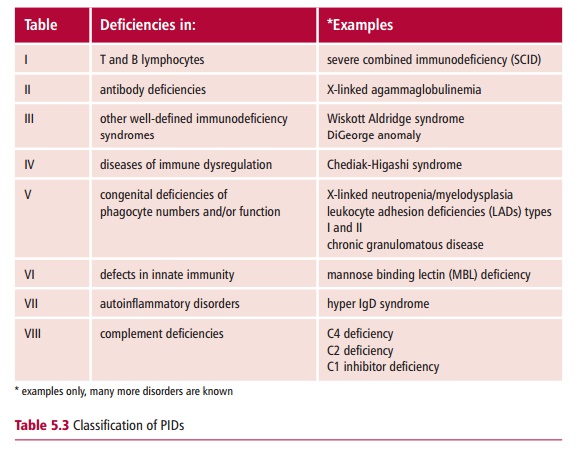Chapter: Biology of Disease: Disorders of the Immune System
The Chediak Higashi syndrome - Primary Immunodeficiency Disease
The Chediak-Higashi syndrome
Chediak-Higashi syndrome (CHS) is a rare autosomal
recessive disorder first described in 1943. It is sometimes classified as a
phagocytic defect.
However, even though phagocytic cells, such as
neutrophils and monocytes, are defective, Natural Killer (NK) cells, which form
the first line of defence against viruses, are also abnormal. The syndrome
arises from a mutated form of the CHS1
gene located on chromosome 1. The gene product is involved in the intracellular
transport of proteins and the synthesis of storage granules in certain cells.
The mutation results in neutrophils with abnormally large or ‘giant’ lysosomes
and platelets with abnormal dense bodies. In addition, melanocytes, the
pigment-producing cells of the skin, contain larger than normal melanosomes;
the pigment storing organelles.
Chediak-Higashi syndrome presents as an immune
deficiency that leads to recurrent bacterial infections, most commonly with Staphylococcus aureus,Streptococcus pyogenes,
and Pneumococcus spp and viral
infections, suchas with Epstein-Barr virus, that frequently result in tumors of
the lymph nodes (lymphomas).
Leukocyte counts reveal neutropenia and abnormal neutrophils that do not
respond to chemotactic molecules, for example activated complement proteins,
and which fail to kill ingested bacteria. Infants suffer recurrent skin
infections, which may result in ulcers and abscesses. The abnormalities of
melanocytes means that patients are deficient in skin pigment and have blond
hair and translucent blue eyes. Infants also bruise very easily, due to
defective platelets. In addition, they suffer progressive neurological
dysfunction, with abnormal gait, mental retardation and peripheral neuropathy.
If the child survives beyond the first decade this may lead to Parkinsonism
and/or dementia. Morbidity and mortality are high in CHS, with infants
frequently dying before the age of 10 years, usually from overwhelming pyogenic
infections attributable to poor neutrophil function.
The recommended treatment for children with CHS is a
bone marrow transplant to correct the immune deficit. However, success has been
variable and this treatment has no effect on the lack of pigmentation since
melanocytes do not arise from bone marrow. Antibiotics are given to treat
bacterial infections and antiviral drugs, such as acyclovir or interferon @, to limit infection with the
Epstein-Barr virus. Patients with lymphoma are given anticancer drugs, such as
vincristine.

Related Topics